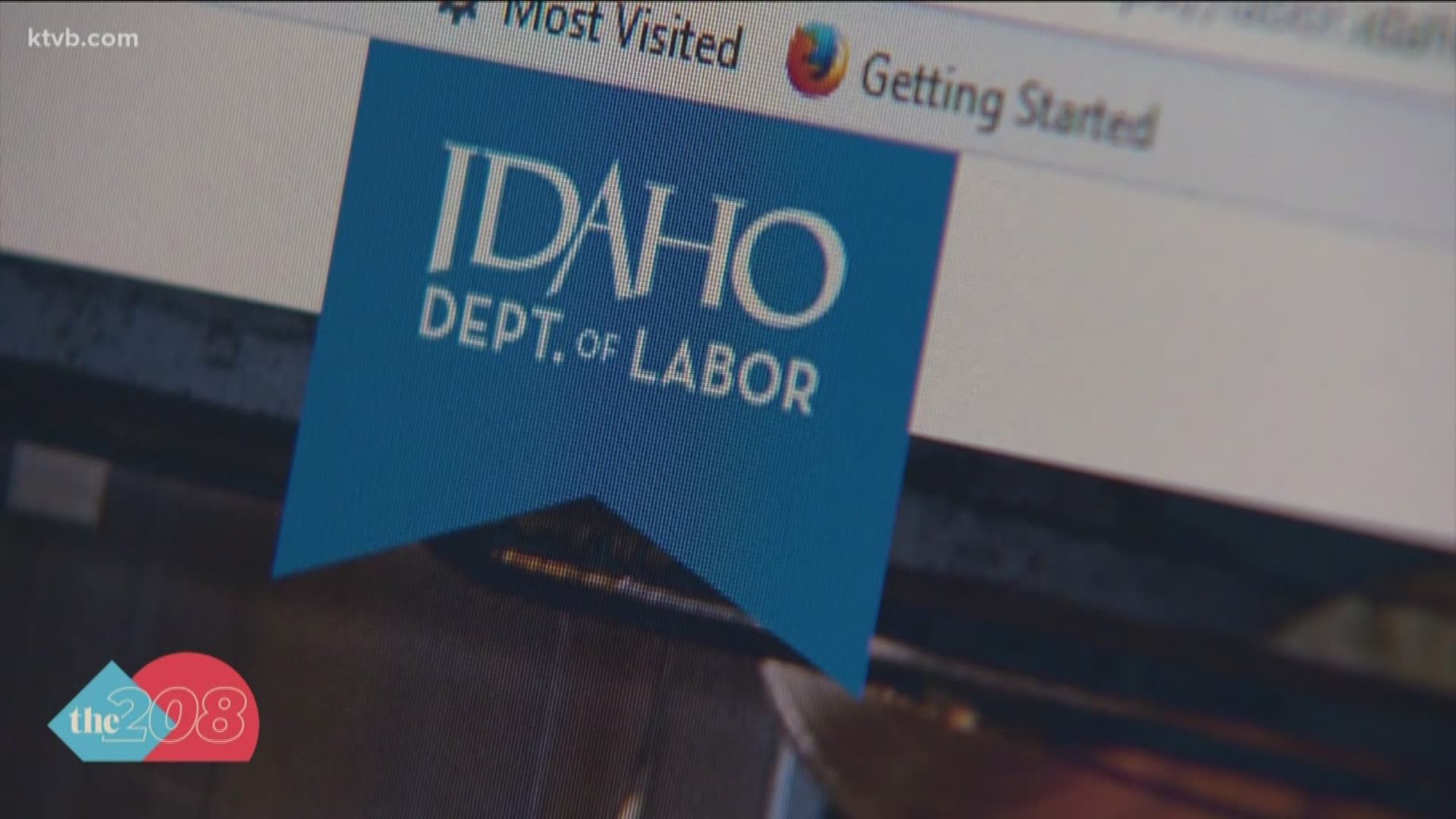BOISE, Idaho — To say Idaho is experiencing huge jumps in the unemployment rate in the last few weeks would be an understatement.
In the first two months of 2020, Idaho's unemployment rate was under 3%, with claims as high as 3,000 per week in early January and as low as 1,000 a week in the first week of March.
But during the week of March 16, unemployment claims jumped 1,200% to more than 13,000 claims. One week later, the same week Governor Brad Little issued a state-wide stay-at-home order for 21 days, another 33,000 Idahoans filed for unemployment.
In August 2010, Idaho's unemployment rate was at nearly 9%, but that took years to add up, not weeks.
In just two weeks, over 46,000 Idahoans have filed for unemployment, including 56-year-old Doug Guymon from Twin Falls and 34-year-old Carissa Novecek from Nampa, both of whom have filed for unemployment before.
We spoke with Lean Reeder, an unemployment insurance technical services specialist, about the process, and how it compares to 2010.
"You know during the Great Recession, we had the same numbers - the difference was it just took longer to get to that number so we had more time to prepare," Reeder said.
That preparation would also apply to how they plan to implement the CARES Act, or the stimulus and extended benefits package Congress passed last month.
There are three parts in the CARES Act that will expand the unemployment insurance program:
- Allows those who normally wouldn't be eligible for unemployment to actually receive benefits, like for those who are self-employed or non-profit employees.
- Adds an extra $600 on top of a weekly claim check.
- Extends unemployment insurance so people who have exhausted benefits and are unable to find work may be eligible for extended benefits.
For most, filing a claim has been relatively easy, but it's the wait time on the phone for questions or changes that have been frustrating for many.
"The site is very user friendly the step by step instructions, not too terribly difficult," Guymon said. "But that was 60-75 minutes out of my life where I was sitting in my easy chair on hold, but once I got through, it was a keystroke on their end, it was taken care of and the frustration level was gone."
Reeder says that the issue is being addressed quickly.
"We are hiring folks but we are going to have to quickly train them," Reeder said. "Unfortunately we won't have as much time as we are normally allowed."
But when could people start seeing that extra $600?
"Unfortunately we really don't have an answer to how long it's going to take before we get all the information that we need," she said.
Reeder added that Idaho's system can handle people collecting benefits beyond the normal three months.
"We learned a lot during the recession and we knew we would eventually have to implement a program, probably similar to the last one that we had during the last recession," she explained. "The system is set up for that and basically it's going to be up to the federal government on how long they want to extend benefits and what the provisions will be but we are set up to add additional funds to the unemployment insurance program."
In the 1930s, the United States began offering unemployment insurance as a safety net, but it only provided a small portion of people's salaries, in an effort to have them find a new job quicker.
Both Guymon and Novecek say they fall into the "employer-attached" category, meaning they don't have to look for another job to continue to get unemployment benefits.
"I figured I'd go back end of April beginning of May," Novecek said.
Join 'The 208' conversation:
- Text us at (208) 321-5614
- E-mail us at the208@ktvb.com
- Join our The 208 Facebook group: https://www.facebook.com/groups/the208KTVB/
- Follow us on Twitter: @the208KTVB or tweet #the208 and #SoIdaho
- Follow us on Instagram: @the208KTVB
- Bookmark our landing page: /the-208
- And we also turn each episode into a podcast on Spotify or Podbeam
- Still reading this list? We're on YouTube, too:

